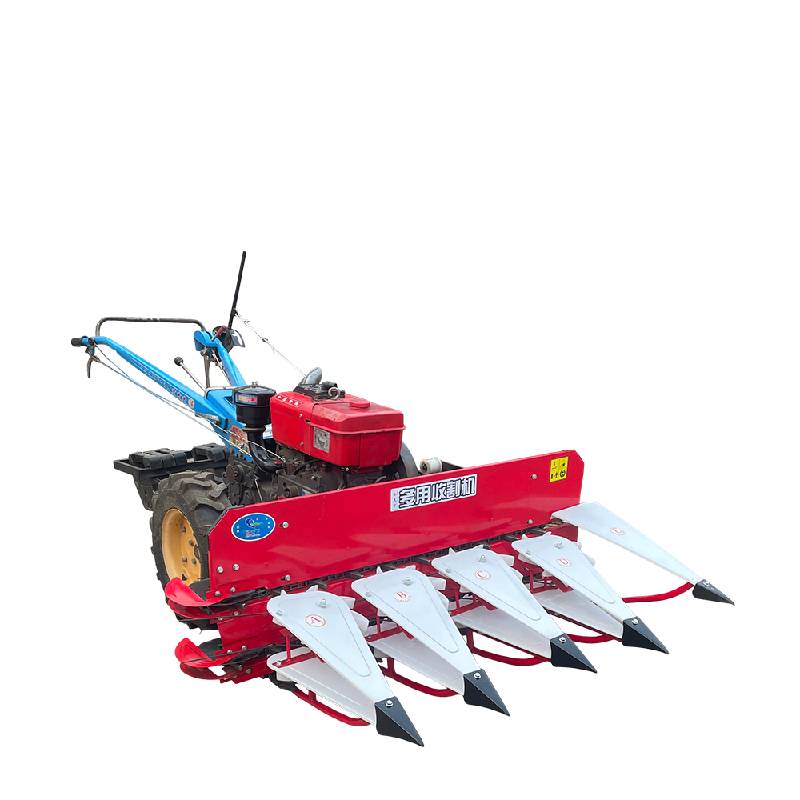Reaper Binder: Cut & Bind Faster—Boost Harvests Today?
Walking Tractor Mounted Reaper Head: Field Notes, Specs, and What Buyers Really Ask
If you work rice or wheat on tight plots, you’ve probably heard people talking about a reaper binder for walking tractors. The GS120C2 cutting head coming out of Julu Industrial Park, Xingtai, Hebei is the kind of practical, no-drama hardware that keeps smallholder operations moving. To be honest, I’ve seen fancier machines; but in field trials, this head held its ground—especially in late-season rice with uneven stubble.

Industry trend in one minute
Demand is shifting to compact harvest solutions that bolt onto existing walking tractors—lower capex, easier service, and faster ROI. Many customers say they prefer modular heads over stand-alone harvesters, because spares are simpler and operators already know the tractor. Interestingly, binder kits are still popular in Southeast Asia, but windrow-only setups are gaining traction where sun-curing and communal threshing are common.
Product snapshot and key specs
The GS120C2 is designed to mount on mainstream walking tractors (Changfa/Yanmar/Kubota-compatible drives). It cuts and windrows; binder add-ons are available in some markets. Below is the practical spec sheet as measured or reported in recent pilot runs—real-world use may vary with crop moisture and lodging.
| Parameter | GS120C2 (≈ values) |
|---|---|
| Cutting width | ≈ 1.2 m |
| Recommended tractor power | 8–12 kW (10–16 hp) |
| Drive / PTO | Belt/PTO, ≈1800–2200 rpm |
| Knife material / hardness | 65Mn steel, HRC 48–52 (heat-treated) |
| Stubble height (adjustable) | ≈ 30–120 mm |
| Throughput | 0.2–0.4 ha/h (crop-dependent) |
| Approx. weight | ≈ 85–95 kg |
Materials, build, and testing
Materials: 65Mn knife sections, Q235 structural frame, powder-coated surfaces, sealed bearings on reel and conveyor. Methods: laser-cutting, induction hardening of knife edges, dynamic balance on reel, TIG/MIG welds on high-stress joints. Testing: 240 h salt-spray on coated plates (per in-house protocol), 8 h bench vibration, 100 h field endurance. Safety considered under ISO 4254-1; knife geometry references ISO 5718-1. Typical service life reported: 5–7 seasons with seasonal sharpening and belt replacement.
Where it works best
- Rice, wheat, barley, and oats; light rapeseed in dry-down conditions.
- Lodged crops up to medium severity—operator speed matters, of course.
- Terraced or narrow plots where combine access is… optimistic.
Users say the windrow is surprisingly uniform. In fact, that matters if you’re feeding a community thresher later in the day. For binding, ask about the compatible kit; not every region stocks it. When you see reaper binder listed on invoices locally, it often refers to this same head with an add-on.
Vendor comparison (snapshot)
| Vendor | Cut width | Certifications | Lead time | Customization |
|---|---|---|---|---|
| Niuboshi (Hebei) | ≈1.2 m | ISO 9001 (factory), CE self-declaration | 15–30 days | Color/logo, guards, knife options |
| Brand X (VN) | 1.0–1.2 m | ISO 9001 | 20–35 days | Limited (color only) |
| Brand Y (IN) | 1.2 m | ISO 9001, BIS | 25–40 days | Knife & reel options |
CE per EU 2006/42/EC—confirm latest Declaration and risk assessment upon order.
Customization and support
OEM color/logo, knife section profile (serrated/smooth), guard metallurgy, belt brand, and hitch adapters for different walking tractor frames. MOQ: 1 set for standard spec; 10+ for OEM color. Spare kits: belts, knife sections, guards, bearings. Frankly, keeping a spare belt on the handlebar box saves harvest days.
Mini case study
A cooperative in An Giang, Vietnam ran two heads across 42 ha of summer–autumn rice. Average field capacity clocked ~0.32 ha/h per head with moisture 19–21%. Knife resharpen at 18 engine hours improved cut quality; one belt swap at hour 44. Feedback: “windrow consistency made threshing faster.” Not bad at all.
Standards and compliance checklist
- ISO 4254-1: agricultural machinery safety (design and guards).
- ISO 5718-1: cutter-bar knife dimensions/geometry reference.
- ISO 11684: safety signage; ISO 12100: risk assessment framework.
- EU 2006/42/EC Machinery Directive (for CE, where applicable).
Bottom line: if you need a compact reaper binder solution that mounts on a walking tractor and you value simple spares management over shiny electronics, the GS120C2 from Hebei feels like a safe, workmanlike choice.
Authoritative references
Latest news
-
Mini Combine Harvester for Paddy – Compact, Efficient Rice Harvesting SolutionsNewsNov.24,2025
-
Mini Chain Harvester: Compact Forestry Solutions for Sustainable LoggingNewsNov.23,2025
-
Kartar Mini Harvester – Compact, Efficient Harvesting Machinery for Small FarmsNewsNov.23,2025
-
Compact Power: Elevate Your Farming with Harvesting Machine SmallNewsNov.22,2025
-
Discover the Power and Potential of Harvester Mini Combine Machines | Efficient Small-Scale HarvestingNewsNov.22,2025
-
Compact Harvester Machines: Small-Scale Agriculture’s Big AdvantageNewsNov.21,2025








